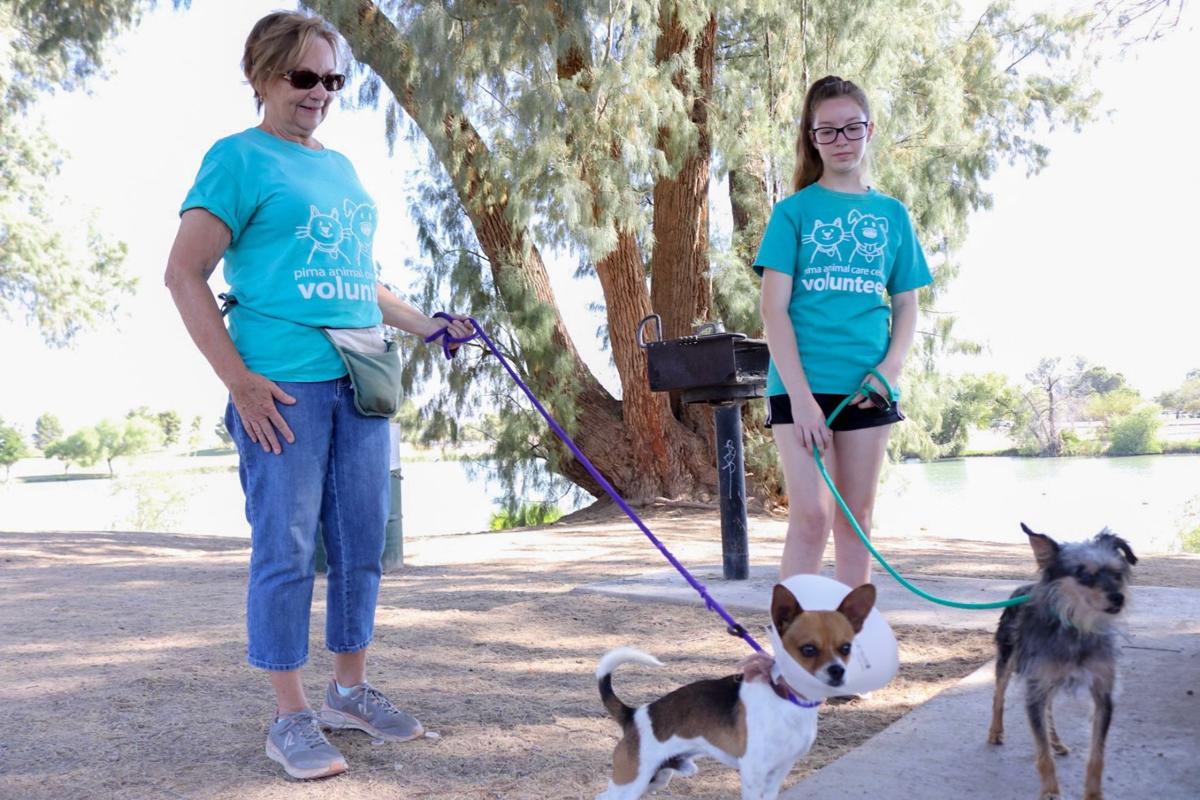Dear Cathy,
My wife and I rescued an adorable little white munchkin a few years ago. I was going to foster him, but that changed after 10 minutes in our home. Charlie was ours. He’s a great companion, but he gets a little whacked out when we are walking and another dog comes into view or barks behind a fence. I’m sure he’s just protecting me, but we’d like him to be better behaved. My wife watches dog shows and we’ve tried new collars and getting between the distraction and Charlie. Do you have any ideas that may help? — Mike, Kingsburg, CA
Dear Mike,
Walking a dog-reactive dog can be challenging, but you can help your munchkin learn better ways to behave. I know you have tried a few things, but let’s try combining some techniques.
First, walk your dog on a 6-foot nylon leash. Tie two knots on the leash, two feet from each end. These knots will give you places to hold onto the leash (more control) without it slipping through your fingers.
Next, use a Martindale collar that prevents escapes, or, a Gentle Leader, Haltie or other type of head collar that prevents pulling, depending on your concern. These collars allow for gentle, yet effective, corrections during reactive situations. (Always, remove these collars after walking or training your dog.)
Blocking his vision is a good idea. When another dog and owner approaches, cross to the other side of the street, then stop, pull your dog behind you, ask him to sit, and shorten your hold on the leash so he can’t move from this position. Stand in front of your dog and face the passing dog. Use your body to block your dog’s view of the other dog. This lets your dog know “you got this,” which often settles most dogs. When the other dog passes, resume your walk.
Next, train your dog to “look at me.” If you watch obedient dogs, they are always looking at their owners for instructions, which helps reduce reactivity around other dogs. Using a clicker, say your dog’s name and when he makes eye contact, “click” and “treat.” Start training your dog with no distractions. Build on that success by training him around some distractions (like a dog behind a fence). Finally, continue training your dog whenever a dog approaches, knowing you can go back to blocking his vision, if needed.
Finally, plan your walks based on his training success and reactivity levels. While exposure to other dogs and people can improve your dog’s tolerance, it also can be very stressful and exhausting if every walk results in multiple reactions. You want your dog to have a success each time he walks. So, walk at less busy times of the day until your dog’s reactivity improves.
Dear Cathy,
I am writing in response to the woman a few weeks ago whose cat died “in God’s timeline,” and she was grateful she didn’t have to euthanize her cat. I had to make the decision twice in the last 20 years, and swore I would never do it again either. But I missed having a dog and the friendship, love and loyalty that comes with it.
So, I made the decision two years ago to start fostering dogs. I am up to number 36 and have never been happier. Each puppy or dog that has come to me is now living a great life in a forever home where they are loved and well cared for.
Every rescue needs fosters. Without foster families, rescue groups cannot pull from shelters, where many wonderful dogs end up being euthanized simply because there’s no home for them. The best part of fostering dogs is I am getting new dogs and puppies all the time. We all need to leave the world a better place and do what we can. I choose to save dogs and I’m a better person for it. — Lisa G., Bellmore, NY, a foster for Ollies Angels Animal Rescue
Dear Lisa,
Thanks for sharing your story. Fostering dogs — and cats — is a great way to help companion animals and save lives. It’s a great volunteer opportunity for families who aren’t ready for a 10 to 15-year commitment and for people who want to help animals, but need a little more flexibility in their lives. Occasionally, people who foster even adopt the animals they are helping (see letter above).
Thanks for sharing how you turned your grief into lifesaving work, and for suggesting others give it a try.





